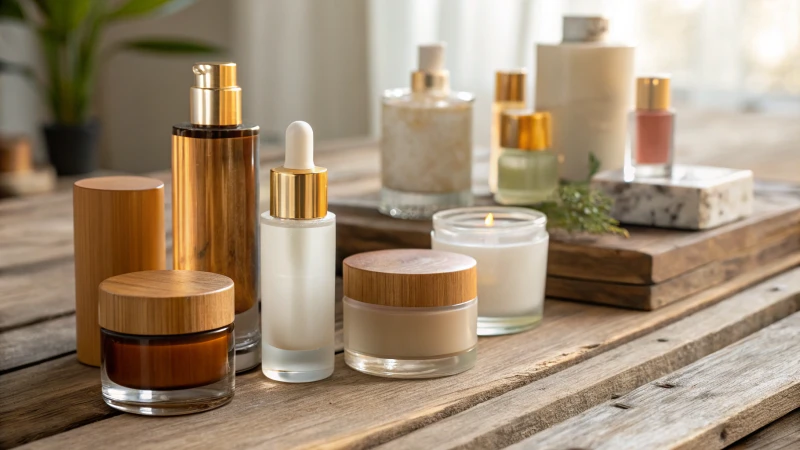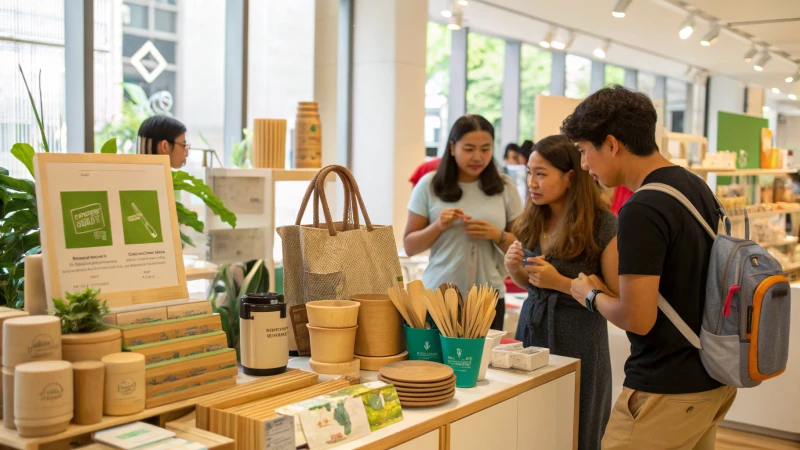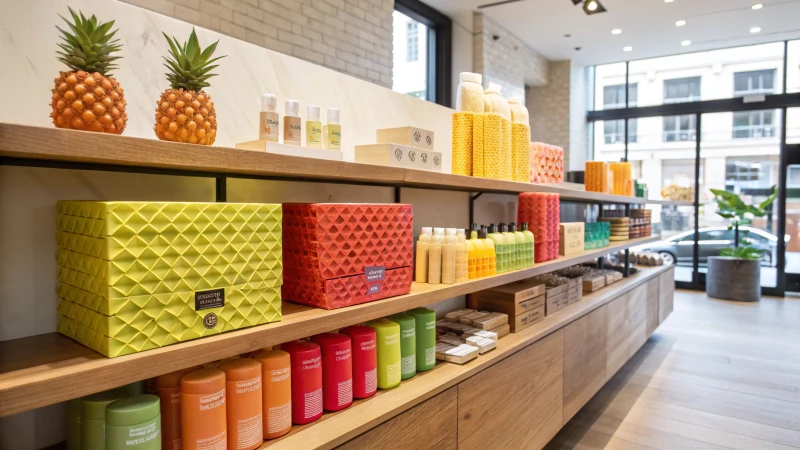
Ever wondered how your favorite cosmetic brands decide on their packaging?
Millennials and Gen Z are reshaping glass cosmetic packaging by demanding sustainability, transparency, and personalized aesthetics. They expect eco-friendly practices and innovative designs that echo their values and lifestyles.
When I first started diving into the world of glass cosmetic packaging, I quickly realized how much these younger generations value sustainability and authenticity. They’re not just looking for recyclable materials; they’re interested in the entire lifecycle of the product. This means brands need to step up their game, ensuring every stage of production aligns with eco-friendly practices. But it’s not just about being green—these generations crave a personal touch. Whether it’s a minimalist design for Millennials or a bold, interactive experience for Gen Z, there’s no denying that their preferences are steering the ship in exciting directions.
Millennials prefer glass packaging over plastic for cosmetics.Verdadero
Millennials value sustainability, making glass a preferred choice over plastic.
Gen Z dislikes personalized aesthetics in cosmetic packaging.Falso
Gen Z appreciates personalized aesthetics as it aligns with their identity expression.
How Can Businesses Appeal to Millennials and Gen Z Through Sustainable Practices?
Ever felt like your brand’s missing the mark with Millennials and Gen Z? You’re not alone. Let me share some insights into what truly resonates with these eco-conscious generations.
To truly connect with Millennials and Gen Z, focus on transparency in your processes, lifecycle management, zero-waste packaging, and engaging, aesthetic designs. Authenticity in these sustainable efforts is key to winning their trust and loyalty.

Emphasizing Transparency in Manufacturing
I remember the first time I realized how much Millennials and Gen Z value transparency—it was a game changer. They’re not just buying products; they’re buying into a story, and they want to see every chapter. These generations expect brands to not only use recyclable materials but also to provide detailed environmental certifications. It’s about more than just a recyclable label—they want carbon footprint reports and third-party verifications. I’ve seen firsthand how companies that invest in robust supply chain transparency systems1 tend to win over these discerning groups.
Lifecycle Management and Zero-Waste Packaging
There’s something almost magical about zero-waste packaging. Gen Z, especially, is all about repurposing, like turning packaging into decorative items or storage containers. I’ve found that when brands adopt true zero-waste production processes, it not only reduces waste but also adds incredible value to their products. This concept of lifecycle management can transform the way customers perceive and engage with your brand.
| Features | Millennials | Gen Z |
|---|---|---|
| Recyclability | High Demand | Essential |
| Zero Waste | Preferred | Mandatory |
| Transparency | Critical | Expected |
Aesthetic and Interactive Packaging Design
Design can be a powerful tool for connection. Millennials often lean towards minimalist elegance, a style that speaks to their love for simplicity and refinement. On the other hand, Gen Z thrives on personalization and interactive designs. Imagine packaging that offers aesthetically pleasing elements like detachable designs or artistic collaborations—I’ve seen this approach work wonders in capturing both generations’ interests. Incorporating technology, like augmented reality features, can create an innovative experience that enhances the packaging’s social currency2.
Authentic Engagement with Social Values
Engaging with social values authentically is crucial. Social media is a powerful platform, and both Millennials and Gen Z are heavily influenced by it. While Millennials focus on the brand’s story and values, Gen Z is drawn to unique, shareable content that stands out. It’s essential for companies to ensure their messaging reflects genuine social responsibility and environmental commitment—this strengthens their brand image on these platforms.
By genuinely addressing these sustainable practices, businesses can effectively engage with these discerning consumer groups, fostering loyalty and advocacy. The key lies in authentic actions that go beyond surface-level sustainability claims.
Millennials demand zero-waste packaging.Falso
Zero-waste packaging is preferred by Millennials, but not demanded.
Gen Z expects transparency in manufacturing processes.Verdadero
Gen Z values transparency, including detailed environmental certifications.
How Do Aesthetic Preferences Differ Between Millennials and Gen Z?
Have you ever wondered how the distinct styles of Millennials and Gen Z shape our world today?
Millennials and Gen Z have unique aesthetic preferences that influence design and marketing. Millennials lean towards minimalist elegance, valuing simplicity and functionality. Gen Z, however, favors personalized customization, seeking bold, interactive, and unique designs that express individuality. Both generations prioritize social media shareability but differ in their stylistic expressions.

Millennials’ Minimalist Elegance
I often find myself drawn to the minimalist elegance that Millennials seem to adore. It’s like a breath of fresh air in a cluttered world. Their love for simplicity resonates with me, whether it’s the clean lines of a smartphone or the gentle hues of a chic skincare package. I remember when I first held a sleek, glass water bottle in my hands—it felt like holding a piece of art.
Millennials are often associated with minimalist design3 that emphasizes clean lines, understated colors, and functional beauty.
Table: Key Elements of Millennial Aesthetic
| Element | Description |
|---|---|
| Clean Lines | Simple, straightforward designs |
| Neutral Colors | Soft, muted tones |
| Functionality | Practical and efficient use |
Gen Z’s Personalized Customization
Then there’s Gen Z, who approach life with a vibrant flair that I find both inspiring and refreshing. They remind me of my younger days when I wanted everything to reflect my personality. They crave designs that pop with color and creativity, like a kaleidoscope of personal expression. Once, while scrolling through Instagram, I stumbled upon a pair of sneakers with detachable patches—a perfect example of Gen Z’s love for customizable style.
Gen Z is known for their penchant for personalization and individuality. This generation craves unique designs that stand out and express personal identity.
Table: Key Elements of Gen Z Aesthetic
| Element | Description |
|---|---|
| Bold Colors | Vibrant, eye-catching hues |
| Interactive Features | Engaging design elements like AR or VR |
| Individuality | Designs that can be personalized or customized |
Social Media Influence on Aesthetics
Both generations are social media savants, but their approaches diverge fascinatingly. Millennials value the story behind a product, much like me reminiscing over old photographs, whereas Gen Z craves immediate visual impact. They’re like digital artists curating galleries on platforms like Instagram and TikTok.
Millennials are more focused on sharing products that align with their values and the brands’ storytelling aspects.
In contrast, Gen Z is highly visual, seeking out designs that are "Instagrammable." They enjoy interactive packaging that surprises or engages their followers through technology4.
Table: Social Media Preferences
| Generation | Social Media Focus |
|---|---|
| Millennials | Brand story, values |
| Gen Z | Visual impact, interactive experiences |
Millennials prefer minimalist designs with clean lines.Verdadero
Millennials are known for valuing simplicity and elegance in aesthetics.
Gen Z dislikes customization in their aesthetic choices.Falso
Gen Z is characterized by a strong preference for personalization and individuality.
Why Do Younger Consumers Value Transparency in Supply Chains?
Have you ever wondered why transparency in supply chains has become such a big deal, especially for Millennials and Gen Z? Let’s dive into how this shift is reshaping brand operations towards ethical practices.
Transparency in supply chains is crucial for younger consumers as it reflects their commitment to sustainability and ethics. They expect brands to reveal product origins and production processes, ensuring ethical standards are upheld.

The Demand for Ethical Practices
I remember the first time I really thought about where my products came from. It was eye-opening to realize that every purchase could impact someone’s life, and not always positively. This mindset is common among Millennials and Gen Z, who are keenly aware of the social and environmental implications of their purchases. They want brands to be upfront about sourcing, labor conditions, and environmental practices. For these generations, decisions are heavily guided by ethical sourcing5 and sustainability.
Scrutinizing Supply Chain Transparency
Transparency is like a trust-building exercise between brands and consumers. Imagine buying a product, knowing exactly who made it and under what conditions—that’s powerful. Certifications like Fair Trade or organic labels aren’t just stamps; they’re assurances that the products align with ethical standards. Brands that skirt around these details risk being accused of "greenwashing," which is essentially misleading consumers about their genuine environmental efforts.
| Certification | Meaning |
|---|---|
| Fair Trade | Ensures fair wages for workers |
| Organic | No synthetic chemicals used |
Impact on Brand Loyalty
Openness and honesty are the cornerstones of trust. I’ve personally felt more loyal to brands that didn’t shy away from sharing their supply chain practices. This transparency can foster stronger relationships with younger consumers, resulting in increased brand loyalty and advocacy.
Leveraging Technology for Transparency
Thanks to technology, like blockchain, transparency has reached new heights. It offers immutable records of a product’s journey, allowing consumers to trace their purchases from origin to sale, thereby enhancing supply chain visibility6.
Driving Change Through Consumer Pressure
The purchasing power of younger consumers is like a mighty wave, pushing companies towards transparency. With social media amplifying their voices, they hold brands accountable for any discrepancies or unethical behavior.
The Role of Social Media
Social platforms are a megaphone for spreading awareness. I’ve seen firsthand how a single post can significantly impact a brand’s reputation. Younger generations often use these platforms to research brands and share experiences. A lack of transparency can quickly tarnish a brand’s image.
| Social Media Platform | Usage Percentage |
|---|---|
| 71% | |
| 52% | |
| TikTok | 40% |
Brands must adapt by integrating transparency into their core operations to meet the expectations of conscious consumers7.
Millennials demand Fair Trade certification for trust.Verdadero
Fair Trade ensures fair wages, aligning with ethical values of younger consumers.
Blockchain technology hinders supply chain transparency.Falso
Blockchain enhances transparency by providing immutable records of product journeys.
How does social media influence packaging trends among these generations?
Ever wondered how scrolling through Instagram impacts the way brands design their packaging?
Social media drives packaging trends by encouraging brands to craft visually striking and shareable designs. Millennials and Gen Z prioritize packaging that reflects sustainability, innovation, and storytelling, often evaluating these elements through social platforms.

The Role of Visual Appeal on Social Media
Scrolling through my Instagram8 feed, I often marvel at how brands transform their packaging into digital art. It’s no longer just about holding a product—it’s about catching your eye and making you pause, even if just for a second. Millennials and Gen Z, in particular, are drawn to those eye-catching designs that pop up in their feeds. I can’t count the number of times I’ve been swayed by a stunning package that seemed to leap out of the screen, begging to be shared.
Millennials’ Focus on Brand Storytelling
For us Millennials, it’s not just about what the packaging looks like—it’s about what it says. I remember being captivated by a skincare line that told a story of sustainability and authenticity9. It wasn’t just packaging; it was a narrative that resonated deeply with my values. This generation loves sharing brands that echo their social causes, making storytelling an integral part of the packaging.
| Millennials’ Packaging Preferences | Key Attributes |
|---|---|
| Minimalist Elegance | Clear, simple designs with a luxury feel |
| Brand Values | Emphasis on eco-friendly materials |
Gen Z’s Demand for Innovation
Gen Z, on the other hand, craves innovation. I’ve seen them engage with brands offering interactive experiences right from the packaging itself. Think AR technology10 or QR codes that open up a whole new world. Their preference for unique and customizable designs allows them to express their individuality in ways we hadn’t imagined.
Sustainability as a Social Media Trend
Sustainability isn’t just a buzzword—it’s a movement that both generations scrutinize intensely. When I think about the times I’ve checked out user reviews or certifications on social media before buying something, it reminds me of how powerful these platforms are in holding brands accountable.
Millennials vs. Gen Z on Sustainability
- Millennials like me focus on full transparency, looking at the entire lifecycle11 of the product.
- Gen Z expects zero-waste initiatives and innovative reuse options, demanding that brands stretch their sustainability practices to new heights.
| Generational Differences | Millennials | Gen Z |
|---|---|---|
| Sustainability Focus | Full transparency in lifecycle | Zero-waste packaging |
| Design Preferences | Minimalist with clear brand values | Interactive and customizable designs |
Conclusión
While I won’t wrap things up just yet, it’s clear that social media’s impact on packaging trends is profound, nudging brands towards more creativity and responsibility.
Millennials prefer minimalist packaging with a luxury feel.Verdadero
Millennials are drawn to simple, clear designs that convey elegance.
Gen Z is uninterested in interactive packaging features.Falso
Gen Z favors interactive elements like AR and QR codes in packaging.
Conclusión
Millennials and Gen Z influence glass cosmetic packaging through demands for sustainability, transparency, and personalized aesthetics, prioritizing eco-friendly practices and innovative designs that reflect their values.
-
Discover why transparency in manufacturing is crucial for building trust with eco-conscious consumers. ↩
-
Learn how packaging’s social currency can enhance brand visibility and consumer engagement. ↩
-
Understand the core elements of minimalist design to see why it’s favored by Millennials. ↩
-
Explore innovative uses of technology in packaging that appeal to Gen Z’s desire for interaction. ↩
-
Discover how ethical sourcing ensures products are made under fair labor conditions, aligning with consumer values. ↩
-
Learn how blockchain technology can enhance visibility and traceability in supply chains. ↩
-
Understand the motivations behind consumer choices that prioritize ethical and sustainable products. ↩
-
Explore how Instagram’s visual platform influences brand packaging strategies. ↩
-
Learn how sustainability shapes brand narratives in packaging. ↩
-
Discover how augmented reality enhances consumer interaction with packaging. ↩
-
Find out why transparency throughout a product’s lifecycle matters to consumers. ↩



